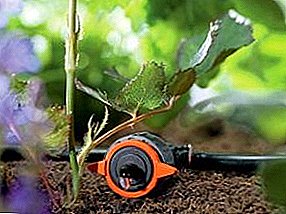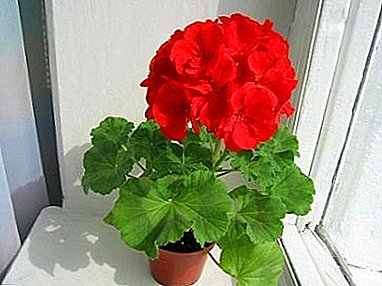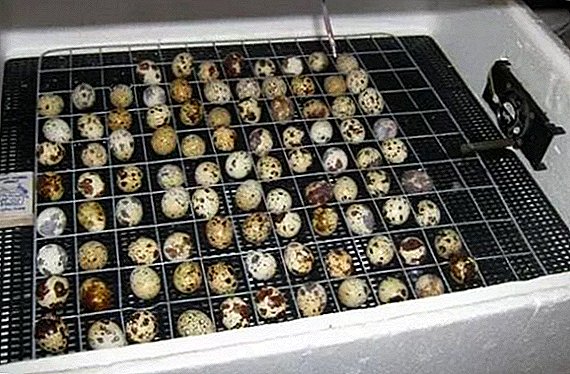 Every self-respecting beekeeper knows: there is not much wax. Therefore, if after a good season you have a few kilograms of fresh honeycombs - do not even think about storing them in the back box. In this article, you will learn how to benefit from the seemingly useless bee storerooms and make the necessary solar wax refinery.
Every self-respecting beekeeper knows: there is not much wax. Therefore, if after a good season you have a few kilograms of fresh honeycombs - do not even think about storing them in the back box. In this article, you will learn how to benefit from the seemingly useless bee storerooms and make the necessary solar wax refinery.
Short description
Already from the very name of the device is clear: it is responsible directly for heating the wax.
Did you know? Wax, obtained by heating in the sun, is considered one of the most environmentally friendly and beneficial in nature. In the people it is called "kapanets".The secret of the popularity of wax pot - in the simplicity of its design. In fact, it is a small wooden box, inside which is placed a baking tray for honeycombs, and on top is covered with a glass lid.
 It would seem nothing supercomplex. But there are several secrets of how to make a really effective solar wax refinery out of an ordinary wooden box on four legs with minimal expenses, and with your own hands.
It would seem nothing supercomplex. But there are several secrets of how to make a really effective solar wax refinery out of an ordinary wooden box on four legs with minimal expenses, and with your own hands.Beeswax is now very popular in traditional medicine and cosmetology.
What we need
Materials for the manufacture of wax can pick up the most affordable and simple. It may be boards, remaining after the repair, and old window frames, or even a “spare part” from the “grandmother's” cabinet.
The main thing is that from all this stuff you can finally build a wooden shell for the future construction.
Required Tools
- Hammer;
- screwdriver (or a screwdriver will fit);
- glass cutter;
- file;
- screws or nails.
Materials for production
- Plywood sheet;
- boards;
- glass;
- pan for honeycombs;
- wax collection;
- mesh that acts as a filter.
Blueprints
Ignore the calculations in the manufacture is not worth it.  We invite you to familiarize yourself with the parameters of the solar wax furnace, shown in the drawing below.
We invite you to familiarize yourself with the parameters of the solar wax furnace, shown in the drawing below.
How to make a solar wax do-it-yourself: step-by-step instruction
1. The main thing to start with is the foundation. The wooden case of the boards is twisted using self-tapping screws (wall height: front - 150 mm, rear - 220 mm, we cut the side parts at an angle). 
Did you know? Calculate the optimal angle of inclination for the glass cover can be by subtracting from the geographical latitude in which you are located, 23.5 degrees. For example, for Kiev, the "ideal" angle of inclination will be 26.5 degrees.2. Cut the bottom of the box from a piece of ordinary plywood 10-15 mm wide.
3. For the cover we need four wooden planks that need to be interconnected with mounting glue.
Important! The cover should protrude slightly beyond the edges of the case. The length of the slats should be chosen with the expectation of a small allowance: approximately 50 mm. This will prevent moisture from getting inside the box when it rains.4. Then we cut a square out of glass and insert it into the frame.
5. Fasten the finished structure to the body with hinges.
6. We arrange our box: at the bottom of the box we place a vessel to collect wax, set a baking tray with holes in it for the wax to flow in from above.  If desired, a filter mesh can be placed on the pan: so you will make the wax much cleaner.
If desired, a filter mesh can be placed on the pan: so you will make the wax much cleaner.
Installation design
This stage of work should not cause no difficulties. In the ground we drive in several columns (for stability) with a height of 70-80 centimeters; we fasten a support board on them with self-tapping screws, and above it we place our wax refinery.  If necessary, it will be possible to change its location depending on the movements of the sun.
If necessary, it will be possible to change its location depending on the movements of the sun.
If you want to increase the efficiency of solar waxing, you can attach a sheet of mirror steel on the inside of the lid: the sun's rays will reflect off the mirror surface and penetrate into the box.
Did you know? Another effective trick is painting the wax in black. The dark surface will actively absorb sunlight and speed up the process of cell heating by an order of magnitude.It is not only convenient, but also pleasant to use such a wax refinery - because it is made with your own hands and conscientiously. With proper care, the construction will serve you for many years and will become an indispensable helper in every apiary.












